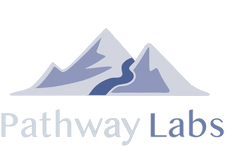In today's fast-paced digital era, educational institutions face numerous challenges in managing student data effectively. A student information system (SIS) is a comprehensive software solution that streamlines and automates various administrative tasks related to student information and academic records. It serves as a central hub for all relevant data, offering a wide range of benefits for educational institutions, students, teachers, and parents alike.
With the help of an SIS, schools can spend less time on repetitive tasks and more time on the things that matter, like their students. However, you may be thinking, what exactly is an SIS capable of doing?
Understanding a Student Information System (SIS)
A student information system (SIS), also known as a student management system or student record system, is a software application designed to manage and store crucial student-related information in a digital format. It serves as a comprehensive database that houses data such as student demographics, academic performance, attendance records, class schedules, and more.
A well-implemented SIS allows educational institutions to efficiently track, organize, and analyze student data, leading to improved decision-making, enhanced operational efficiency, and better student outcomes. In addition to storing data, an effective SIS can help administrators automate tasks and spend less time on menial tasks.
Key Features of a Student Information System
Each SIS is unique in its feature set and capabilities, so it’s smart to always have a solid understanding of what one SIS offers that others can’t. However, among all software systems on the market, there are a handful of key areas that will usually alway ring through.
Centralized Student Data Management
An SIS consolidates student data into a centralized database, eliminating the need for separate record-keeping systems. This simplifies data entry, retrieval, and updates, ensuring accuracy, consistency, and easy access to information. After implementing an SIS, you will be able to easily search for and pull up a student’s records with just the click of a button. For example, MyPath functions as a lightweight CRM and allows you to easily find student data in seconds.
Enrollment and Admissions
A robust SIS will also automate the entire enrollment and admissions process, from online applications to document verification and fee payments. It streamlines communication between students, parents, and the institution, reducing paperwork and manual effort. If you’re a school that still relies on paper applications, implementing an SIS will help you save hundreds of hours parsing through physical paperwork.
Academic Management
SIS platforms can also provide tools for managing student academics, including class scheduling, grading, assignment tracking, and progress reports. Teachers can easily record grades, generate report cards, and communicate with students and parents regarding academic performance. This also allows school administrators the ability to quickly monitor a student's academic progress. By doing this, it can quickly flag to administrators if a student is on track or off track to finish their program track.
Attendance Tracking
In addition to grading, an SIS can automate attendance tracking or hour clock tracking processes. It allows teachers to record and monitor student attendance or hours digitally, reducing errors and saving valuable instructional time. Also some tools will even provide tools, like a QR code, for students to easily check themselves in and out of class.
Communication and Collaboration
An SIS facilitates seamless communication and collaboration among students, teachers, parents, and administrators. Features such as messaging platforms, online forums, and portals ensure timely information sharing, parent-teacher collaboration, and enhanced engagement.
In our day and age, it’s not only important to email students, but to also follow up with them through text or SMS. More and more schools are adopting mobile communication to actively engage their students, and an effective SIS should give you the ability to do both. With a tool like MyPath, you can easily manage both mediums and communicate with students all within your SIS.
Reporting and Analytics
SIS platforms offer comprehensive reporting and analytics functionalities that provide valuable insights into student performance, class trends, and institutional effectiveness. This data-driven approach enables educational institutions to identify areas of improvement and make data-backed decisions.
If you’re a school that offers financial aid services, you’ll want to ensure the SIS you choose provides easy access to your student data. A number of government regulations, such as Title IV in the US, will require frequent reports in order for the school to maintain its federal financial aid eligibility.
Why You Need a Student Information System
We truly believe that any school looking to grow and operate effectively needs to have an SIS of some sort in place to be successful. The benefits of having one definitely outweigh the cons by a longshot.
Improved Efficiency
Implementing an SIS minimizes manual paperwork, repetitive data entry, and administrative overhead. It streamlines processes, reducing the time and effort required for routine administrative tasks, allowing educators to focus on teaching and student support. Save you and your team hundreds of hours with just one software solution.
Enhanced Data Accuracy and Accessibility
A well-designed SIS ensures data accuracy and integrity by eliminating the risks associated with manual record-keeping and data entry errors. Authorized personnel can access student information securely and efficiently, saving time and improving decision-making. As we said before, having access to your student records and data is crucial for compliance reasons. By digitizing it all, your team can easily pull reports with the click of a button.
Streamlined Administrative Tasks
An SIS automates various administrative tasks such as enrollment, grading, attendance management, and report generation. This frees up valuable staff time, reduces paperwork, and ensures greater efficiency across the institution.
Improved Communication and Parental Involvement
SIS platforms provide transparent communication channels between teachers, students, and parents. Parents can easily access their child's academic progress, attendance records, and other relevant information, fostering a strong partnership between home and school.
Data-Driven Decision Making
The reporting and analytics capabilities of an SIS enable educational institutions to generate comprehensive reports, track trends, and gain insights into student performance, attendance patterns, and overall institutional effectiveness. This data empowers institutions to make informed decisions and implement evidence-based strategies for student success.
Scalability and Adaptability
A well-implemented SIS can grow and adapt with an institution's changing needs. It can accommodate increased student enrollment, additional programs, and evolving educational requirements, ensuring scalability and flexibility. For schools that aim to grow and continue to be successful, adopting an SIS is a no brainer.
Ready to Implement an SIS?
In conclusion, a student information system (SIS) is a powerful tool that simplifies student data management, enhances administrative efficiency, and improves communication and collaboration within educational institutions. By leveraging the capabilities of an SIS, educational institutions can streamline their operations, reduce administrative burdens, and provide a more personalized and engaging educational experience for students.
Whether it's enrollment, academic management, attendance tracking, or data-driven decision-making, an SIS plays a vital role in optimizing educational processes and driving student success in today's technology-driven world. If you’d like to learn more about the MyPath SIS, click here.

